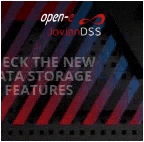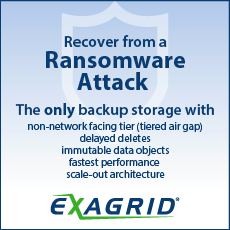History 2003: Tandberg Splits in Two
Tandberg Data will continue to exist, while new company Tandberg Technology to be created.
This is a Press Release edited by StorageNewsletter.com on December 12, 2023 at 2:01 pmIn an attempt at a strategic corrective, the board of Tandberg Data ASA voted to divide the company into two separate legal entities, both of which will be listed on the Oslo Stock Exchange.
Specifically, Tandberg Data will continue to exist, while the new company Tandberg Technology is to be created. The latter entity will reunite the tape drive manufacturers hardware R&D activities, some OEM sales, as well as subsidiary O-Mass, which has been working on a forthcoming high-capacity tape technology.
NOK55 million ($7.8 million) in cash was contributed by Tandberg Data to the new entity. Imation will retain its 6.5% of shares in O-Mass.
Tandberg Data will subsequently retain 19.9% of shares of Tandberg Technology, with the remainder owned by the current shareholders of Tandberg Data in the same proportions.
Meanwhile, Tandberg Data will continue to develop and sell its automation products, NAS, software solutions while also supplying SLR and DLT drives.
Will this un-merger allow each of the new entities to recover? Since 1999, the Norwegian firm’s sales have fallen without cease, with negative operating results each year. The company’s management had thus far failed to find any solution to redress the problem, to evolve SLR technology, still not entirely reliability in all applications, or to make up for the strong decline in low-end tape drives.
SLR is only surviving through OEMs – Fujitsu-Siemens in Germany and essentially IBM, which until now hasn’t wanted to drop its own end-users that bought into the technology.
Recall that, by the end of 2002, Tandberg had sold 3.1 million SLR drives since its start fifteen years earlier. Of this figure, 850,000 went through Big Blue. Sales to OEM customers, i.e. the two companies just cited, represented 29% of the company’s total revenue in 2002.
Like other tape makers such as Exabyte, OnStream, Certance or StorageTek, Tandberg does not manufacture its tape cartridges. For SLR, everything comes from Imation, which is not the easiest of partners to deal with in this domain.
As Quantum has proven, even if it doesn’t make the media, but rather collects substantial royalties on them, the most lucrative business isn’t for tape drives, but for cartridges. The agreement with Quantum did not permit Tandberg to bounce back.
The latter handles DLT in Europe, but Quantum has done nothing for SLR in USA, where the market has crumbled considerably.
Diversification towards automation products with contract manufacturer was not a particular success either. Tandberg was even more or less obliged to acquire subcontractor Overland’s SLR automation products business. The company also decided, over the past few months, to subcontract all its manufacturing, PCBs and SLR drives alike, to Norwegian firm Kitron, while DLT tape drives are now contracted to Jabil in Malaysia, which also manufactures the units for Quantum.
Tandberg’s U.S. subsidiary has already bitten the dust, as has the UK office.
Nor did we ever understand why the company entrusted all its European sales and marketing operations to its German subsidiary in Dortmund, given that Oslo is basically just as close by plane to any other country on the continent.
Tandberg had wanted to refocus on storage subsystems, on the one hand with RAIDtec, on the other acquiring part of Land-5, which became InoStor, now under the umbrella of Tandberg Data. This market segment, however, whether for NAS or RAID, is rife with competitors.
In the end, there’s O-Mass, on which Tandberg has counted in the past, and will continue to do so, with a new tape technology combining optical and magnetic elements, extremely impressive on paper (1.2TB, 64MB/s native), but which has been so delayed that, once it is launched, in theory sometime in 2005, it may well be too late with respect to the planned generations of LTO, SDLT or SAIT.
A divided Tandberg Technology, at least, can hope to have an easier time finding new investors. The new entities will need them, since until 2005, the companies will only have cash to live off, in the absence of products to sell.
Who, though, other than Imation, is prepared to put money in this day and age into a new tape technology? It would be easier to attempt it in disk-to-disk backup.
This article is an abstract of news published on issue 186 on July 2003 from the former paper version of Computer Data Storage Newsletter.














 Subscribe to our free daily newsletter
Subscribe to our free daily newsletter

